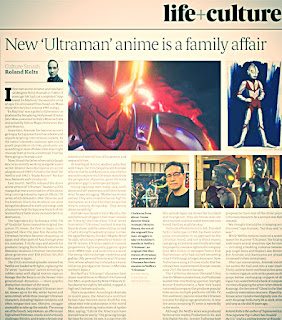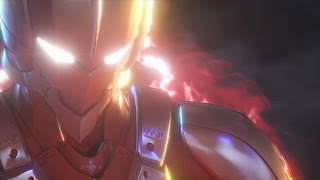My hero, ULTRAMAN, hits Netflix as anime
New 'Ultraman' anime is a family affair
The Japan Times
I first met anime director and mechanical designer Shinji Aramaki in Tokyo 12 years ago. He had just completed “Appleseed: Ex Machina,” the second in a trio of epic CG-animated films based on Masamune Shirow’s four-volume 1985 manga.
“Ex Machina” was a global collaboration: co-produced by Hong Kong/Hollywood director John Woo, costumed by Italy’s Miuccia Prada and scored by Yellow Magic Orchestra’s Haruomi Hosono.
Since then, Aramaki has become anime’s go-to guy for Japanese franchise reboots and sequels targeting international markets. As the nation’s domestic audience ages and its youth population shrinks, producers are scrambling to dust off older titles that might resonate both at home and abroad. That has them going to Aramaki a lot.
Now 58 and the father of two adult daughters, he is currently working alongside screenwriter/director Kenji Kamiyama on anime adaptations of 1989’s “Ghost in the Shell” for Netflix and 1982’s “Blade Runner” for Cartoon Network and Crunchyroll.
Last month, Netflix released the duo’s anime version of “Ultraman,” based on a 2011 manga that was a continuation of the classic long-running tokusatsu (special effects) TV series, which debuted in 1966. Ultraman and his brethren (the Ultra Brothers) are alien beings that descend to earth and merge with a human to help the Japanese branch of the Science Patrol battle exotic monsters bent on destruction.
Netflix 2019
The legendary Eiji Tsuburaya (1901-70) of “Godzilla” fame created the original live-action TV show, the first in Japan to be exported. Over the past five decades the Ultraman brothers became ubiquitous in Japan and other parts of Asia through posters, costumes, T-shirts, toys and adverts for products ranging from Honda vehicles to Hawaiian vacations. Ultraman merchandise alone generates over $50 million (¥5.5billion) a year in Japan.
Kyodo 1966
The 13 CG-animated episodes released on Netflix are loaded with fights, replacing the TV series’ “suitmation” (actors wrestling in rubber suits) with digital motion-capture footage. But the focus is on the heroes’ inter-generational dynamics — more psychodrama than monster-of-the-week.




.jpg)